10 Must-Have Elements For High-Performing Pillar Pages
Did you know that even abstract concepts like content marketing follow evolutionary principles? Think about it: Before content marketing was mainstream, a few people started a blog and, because of their specialization, became highly successful. Smart marketers soon caught wind and started a blog also. Over the years, this well-intended, highly successful way of sharing information became a rat race of who could push out more content in less time. As business blogging became the norm, it was impossible to stand out anymore and a content fatigue set in.
Now, the competitive advantage cannot be found anymore in simply publishing as much content as possible (which is never a great idea as you end up creating lower-quality posts), but in how strategic you are in planning them, how you organize them, and how you present them to your readers. And the most effective way to do that is to create content clusters and pillar pages.
Elements Of A Successful Pillar Page
An outstanding pillar page can help you
- Show up in the first positions of a Google Search Engine Ranking Page and drive more traffic to your website,
- Convert highly-qualified visitors into engaged, warm leads,
- Build thought leadership in your industry and therefore shorten sales cycles and lower price sensitivity,
and much more.
But there is an art and science to it that requires a relentless drive to provide the best possible user experience and the most helpful content. There are no short-cuts, nor is there room for mediocrity. To get started, we compiled a list of the ten most important must-have items to make your pillar page a success:
- Clearly Defined Subject & Scope
- Google Snippet Worthy Topic Definition
- Chapter / Sub-Topic Navigation
- Supporting Blog Posts & Content
- Internal Resources Linking To The Pillar Page
- Links To External Resources
- High-Quality & Relevant Images
- Adequate Formatting
- Conclusion & Next Steps
- Lead Generation Opportunity
Let's have a look at each of the elements in more detail.
Clearly Defined Subject & Scope
Like any outstanding piece of content, carefully choosing and clearly defining the subject lays the foundation for future performance. Choose a topic that clearly aligns with your primary buyer persona's needs and is highly relevant to your business model. For example, if you help organizations to migrate to Windows 10 and manage upgrades more efficiently, you could create a pillar page called "The Ultimate Windows 10 Servicing Resource Guide".
Be sure that your chosen topic receives enough monthly search volume. The exact number of searches depends on your niche, e.g., 1,000+ searches a month is an amazing target to shoot for in the enterprise technology market, while B2C companies will dismiss a topic like that.
Once you have decided on a subject, you need to clearly outline the scope of your pillar page. I always tell my clients to imagine they are writing a book on the topic. What would your table of contents look like? Which chapters do you need to include, which need to be broken out into sub-chapters, and which topics should be only mentioned, but further explored in linked-up blog posts?
Google Snippet Worthy Topic Definition
Now that you know what you are writing about, it is time to create a concise definition of the subject you are writing about. There are several reasons for this. First of all, your readers will be able to understand what this page is about, what it isn't, and how it fits into a larger context. Secondly, it gives Google and other search engines a clear indication on how to best index it, hence improving the chances of showing up in a search.
Lastly, Google will create "Featured Snippets" of selective search results and feature them prominently on the top of its organic search results. The goal is to answer a user's question without having to click on the article and reading it. This gives your organization significantly more brand exposure within the search page and gives users the perception that this content is trustworthy and has been helpful to other users before.
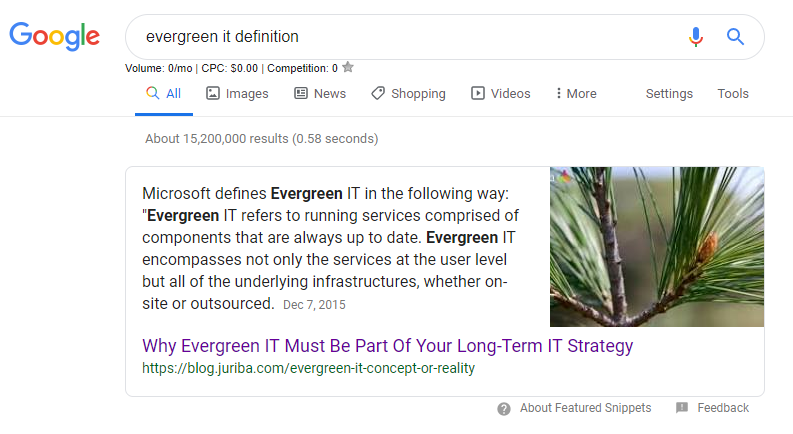
The above screenshot is an example of a piece of content we wrote for one of our clients. To learn more about Google Featured Snippets and how to improve your chances of getting your content featured, read our "How To Increase Your Organic Traffic With Google Snippets" blog post.
Chapter & Sub-Topic Navigation
Pillar pages tend to be very long pieces of content — often between 2,500 to 5,000 words long. Because the average reader can process about 250 words per minute, this can take 10-20 minutes to read. Because there are many disruptions and attention spans are short, it is crucial to make the content as scannable as possible to enable readers to quickly find what they are looking for.
The easiest (and best) way to accomplish this is to create a navigation in either a sticky sidebar or in a bar on the top that snaps in place and is always available as the user scrolls down. This way, any visitor can immediately understand how the content is structured and what to expect, and can jump to the topic that interests them the most.
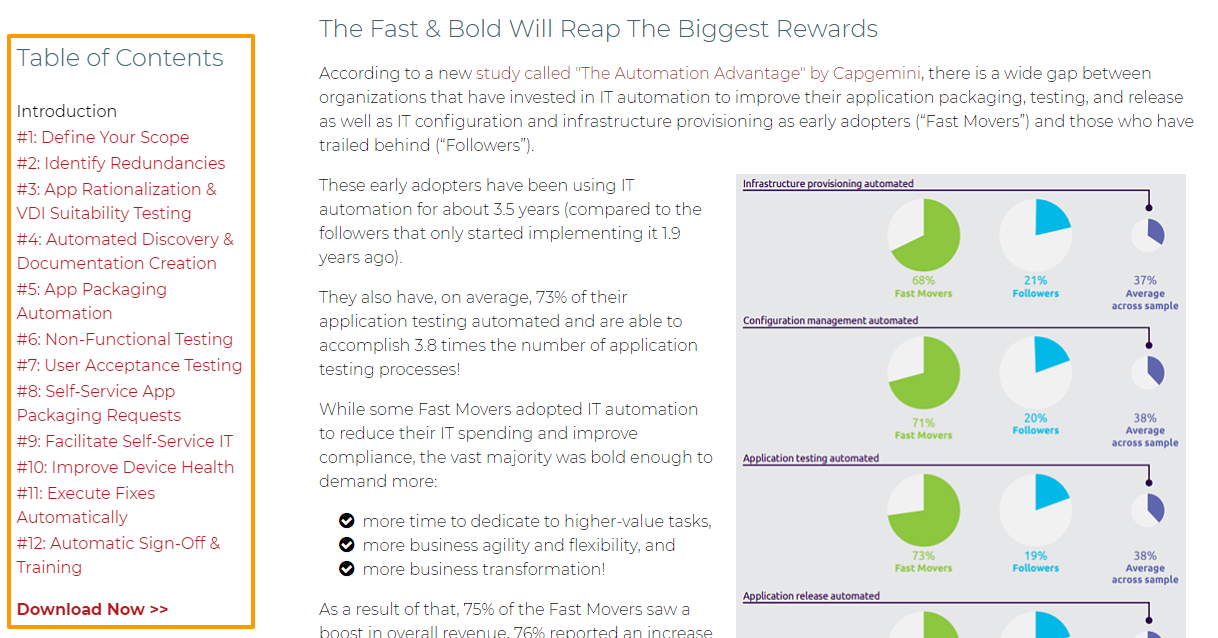
Linking To Supporting Blog Posts & Other Content
A pillar page is a corner piece in your content marketing strategy, but by no means should it be a stand-alone piece of content. I always explain the overarching concept of cluster content and pillar pages by using the visual of a temple in Ancient Greece. Imagine each of those beautiful columns being a solid leg this page stands on.
Let's say you are writing a pillar page on how blockchain can revolutionize today's supply chains. For example, one of the chapters can be called "Benefits of Using Blockchain in Your Supply Chain". While your pillar page will list and explain all of the benefits, you might want to write a dedicated blog post for each of those benefits, e.g., "How Blockchain Can Accelerate Food Traceability From 7 days to 2.2 Seconds". This could look something like this:
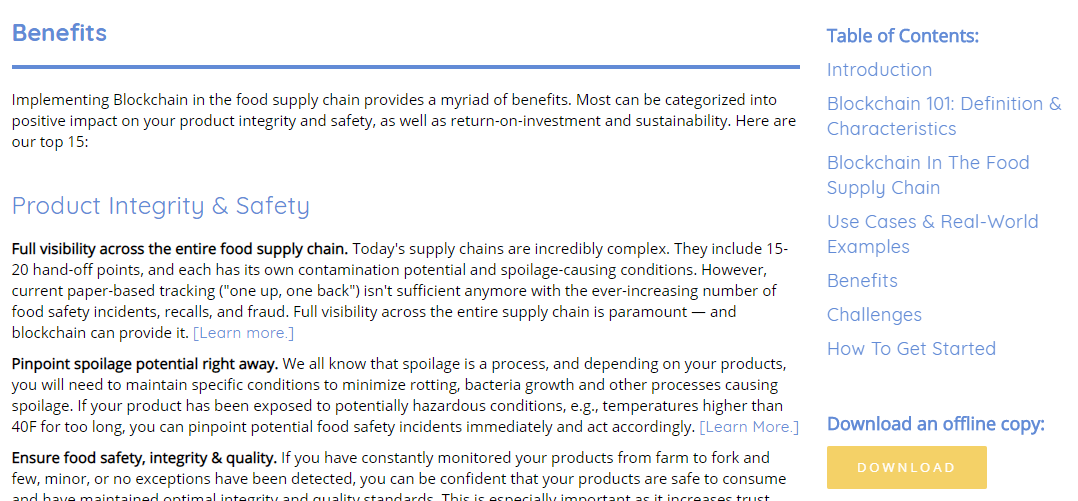
Internal Resources Linking To The Pillar Page
While it seems intuitive to link to supporting resources from the pillar page, a lot of people forget to link from the supporting content to the pillar page. But it is always a good idea to do so. For one, it makes sense: Someone who is reading a blog post that supports your overarching pillar page is most likely interested in reading the pillar page and other supporting articles around the pillar page topic as well. In addition, by linking those blog posts, your pillar page receives an SEO boost through quality inbound links.
There are several ways of doing this. While you could design a more elaborate way to highlight the pillar page, we have found that a simple line of text strategically positioned works very well. The screenshot below shows an example:

Don't forget to add your pillar page to your navigation, to your resource page, and in other strategic places.
Links To External Resources
Now that you have linked to and from supporting blog posts and other internal content, it is important that you also link to external resources, such as studies that you mention or other third-party research that could be helpful to your readers. Some people are hesitant to do that as they feel like they are diverting traffic away from their site by linking to other websites.
But think about it: would you trust a report that cites numbers and refers to studies but doesn't link to them? It is the right thing to do. Give credit where credit is due and always source your material correctly.
High-Quality & Relevant Images
Tacky stock images are a huge pet peeve of mine! Simply put, don't use them. No one likes them and it immediately degrades the quality of your page from a reader's point of view. They make you look spammy.
Instead, use high-quality images that aren't your standard, run-of-the-mill photos and closely align with the content you are writing. You can either create them yourself, get a graphic designer to create something for you, or use licensed images from websites like Shutterstock, Canva, or Pixabay. Some are free, some must be paid for.
For example, the image below is a great example of a team wireframing or designing a project and could be used in various contexts, e.g., in a blog post about Agile Software Development.

Adequate Formatting
Your pillar page will contain a LOT of text, so be sure to pay proper attention to formatting. It starts with designing a pillar page template:
- Using a fast-loading font, such as Montserrat, Open Sans, or Raleway,
- Choosing a large enough font size (12-14 pixels minimum depending on the font you choose),
- Ensuring that your line height is at least 1.1 (110%), and
- Having enough contrast to make reading longer texts easy on the eyes.
In addition, as a content creator, you should be sure to structure your text hierarchically using headers, sub-headers, and bolding to make it easier for your reader to intuitively grasp the context.
Using bullet pointed lists to break up the text heaviness will help your reader to maintain attention, while adequate white space on the page and breaking up longer segments into paragraphs no longer than 3-5 lines will result in less fatigue.
Conclusion & Next Steps
Too many great pieces of content end abruptly with "If you are interested in XYZ, please contact our sales team." Most likely, your readers are going to take a pass and you will never know who took the time to read it. By rounding off your pillar page with a conclusion and next steps, you have a chance to not only highlight the most important key takeaways, but also map out for anyone interested what should come next, as someone who isn't familiar with your topic doesn't necessarily know how to get started.
One of the next steps could be to:
- Download your buyer's guide that contains information on what key features a purchase decision maker needs to look out for, what licensing models to expect and more,
- Schedule a demo or start a trial to start exploring the product in more depth, and
- Book a consultation with you to gain more concise insights on how to solve their particular problem.
Whatever the exact steps are, be sure to make them practical and helpful — this is not the time for a hard sell.
Lead Generation Opportunity
Last but not least, you will want to offer a more top-of-the-funnel conversion opportunity for leads that aren't ready to start a trial or set up a consultation yet. The easiest way to do that on a pillar page is to offer a downloadable version of the content in the form of an eBook, whitepaper, or guide. Include the link to the download on your sidebar right under your table of contents, in the hero banner, and/or on the bottom of the page.
Share this
You May Also Like
These Related Stories

Must-Have Elements Your Home, About Us, & Resource Website Pages Need

How To Create A Thank You Page In Minutes Using HubSpot

.png?width=250&height=125&name=TrustBuilderLogoWhiteTranspBackgr(250x125%20px).png)
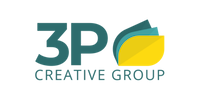
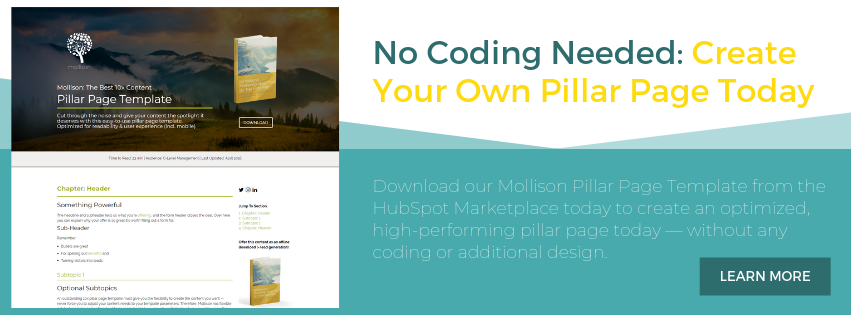
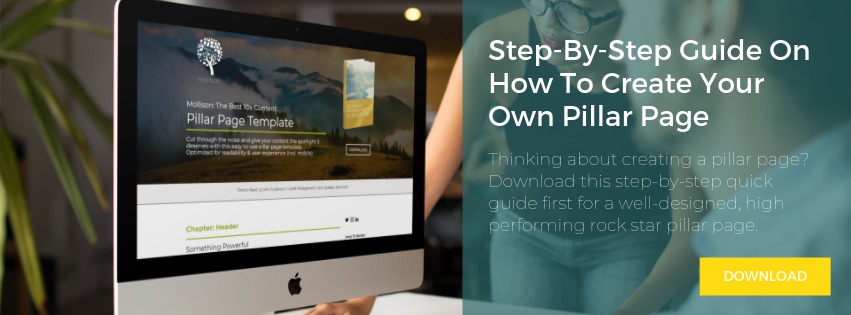
No Comments Yet
Let us know what you think